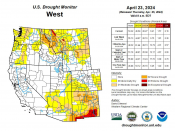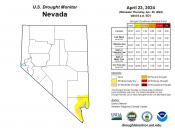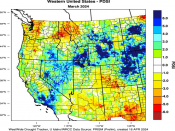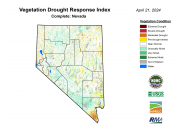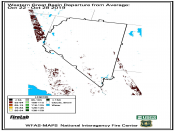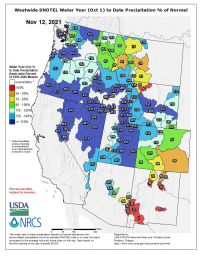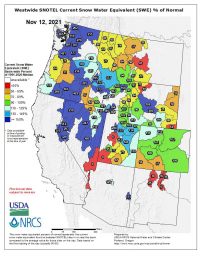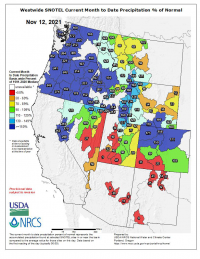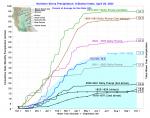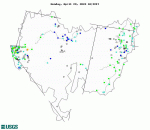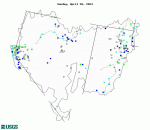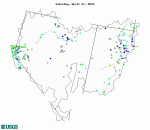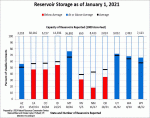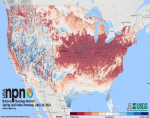General Drought Information
Average Temperature Departure from Normal

Updated daily. Departure of average temperature from the 1981-2010
NCDC normal for the given time period.
| Last 7 days | Last 30 days | Last 90 days |
Water Year (since Oct 1) |
Last 12 months |
|---|---|---|---|---|
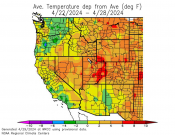
|
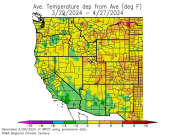
|
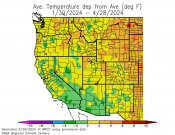
|
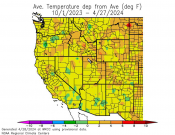
|
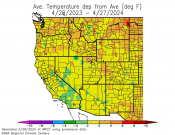
|
Precipitation Percent of Normal

Updated daily. Percent of the 1981-2010 NCDC normal percipitation
value at each station for the given time period.
| Last 7 days | Last 30 days | Last 90 days |
Water Year (since Oct 1) |
Last 12 months |
|---|---|---|---|---|
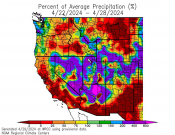
|
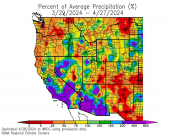
|
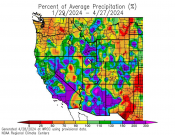
|
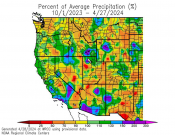
|
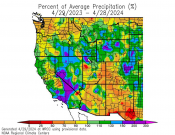
|
NWS Observations, Normals, and Records for Current Water Year

Updated daily. Station-based climate information for various
locations in the Great Basin. Extreme high and low temperature records
for a day of the year are indicated by the blue and red bars. The normal
range is shown in green. For precipitation, normal annual accumulations
are shown in light green. Actual water year-to-date precipitation is
shown in mint green. The deficit between the two is shown in brown.
| Reno, NV | Elko, NV | Salt Lake City, UT | Boise, ID | Las Vegas, NV |
|---|---|---|---|---|
 o o
|
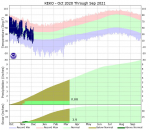
|
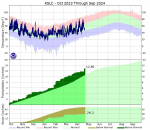
|

|
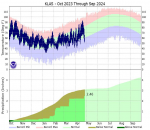
|
Standardized Precipitation Index (SPI)

Updated daily. Standardized Precipitation Index (SPI) is a
probability index that considers only precipitation. The SPI is an index
based on the probability of recording a given amount of precipitation,
and the probabilities are standardized so that an index of zero indicates
the median precipitation amount (half of the historical precipitation
amounts are below the median, and half are above the median). The index
is negative for drought, and positive for wet conditions.
| Last 30 days | Last 60 days | Last 90 days |
Water Year (since Oct 1) |
Last 12 months |
|---|---|---|---|---|
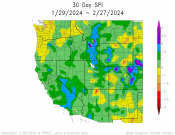
|
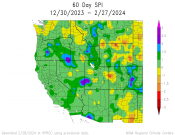
|
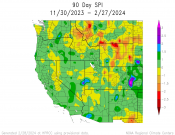
|

|
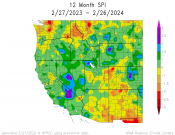
|
NRCS Snotel Basin Graphics
Links:
NRCS Snotel GIS Products
Other Hydrologic Information
Links:
CDEC Sierra Precipitation
|
USGS Water Watch
|
About Waterwatch
|
NRCS Reservoir Info/Graphics
CA-NV Evaporative Demand Drought Index (EDDI) Current Analyses

Updated daily. The EDDI examines how anomalous the atmospheric
evaporative demand (also known as "the thirst of the atmosphere") is for
a given location and across a time period of interest. EDDI is calculated
based on NLDAS 1/8-degree gridded meteorological data and shown here for
one, three, and six month periods. EDDI is updated daily, with a
five-day lag.
| 1-Month EDDI | 3-Month EDDI | 6-Month EDDI |
|---|---|---|
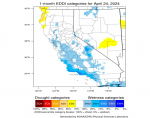
|
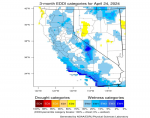
|

|
Links:
ESRL EDDI Information
US-Wide Evaporative Demand Drought Index (EDDI) Current Analyses

Updated daily. The EDDI examines how anomalous the atmospheric
evaporative demand (also known as "the thirst of the atmosphere") is for
a given location and across a time period of interest. EDDI is calculated
based on NLDAS 1/8-degree gridded meteorological data and shown here for
one, three, and six month periods. EDDI is updated daily, with a
five-day lag.
| 1-Month EDDI | 3-Month EDDI | 6-Month EDDI |
|---|---|---|
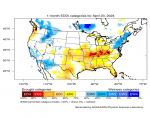
|
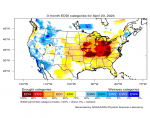
|
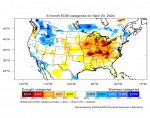
|
Links:
ESRL EDDI Information
National Phenology Network
Links:
National Phenology Network

